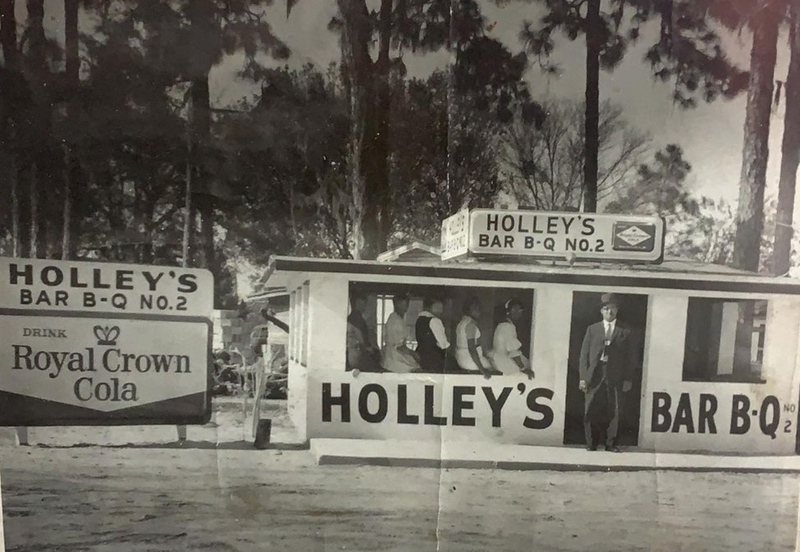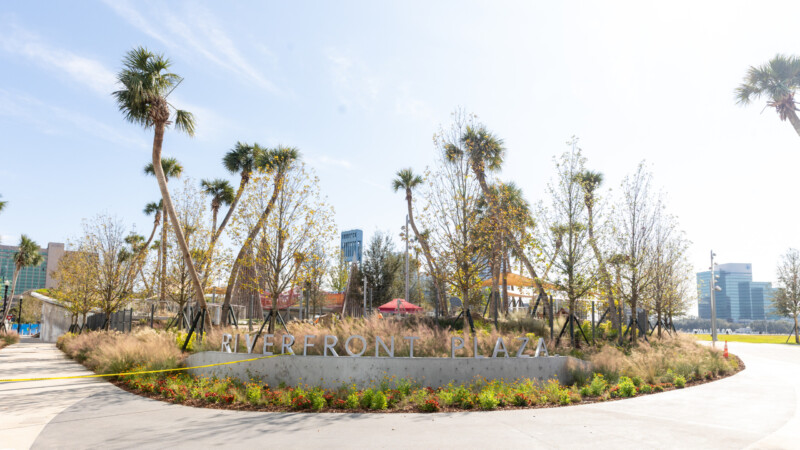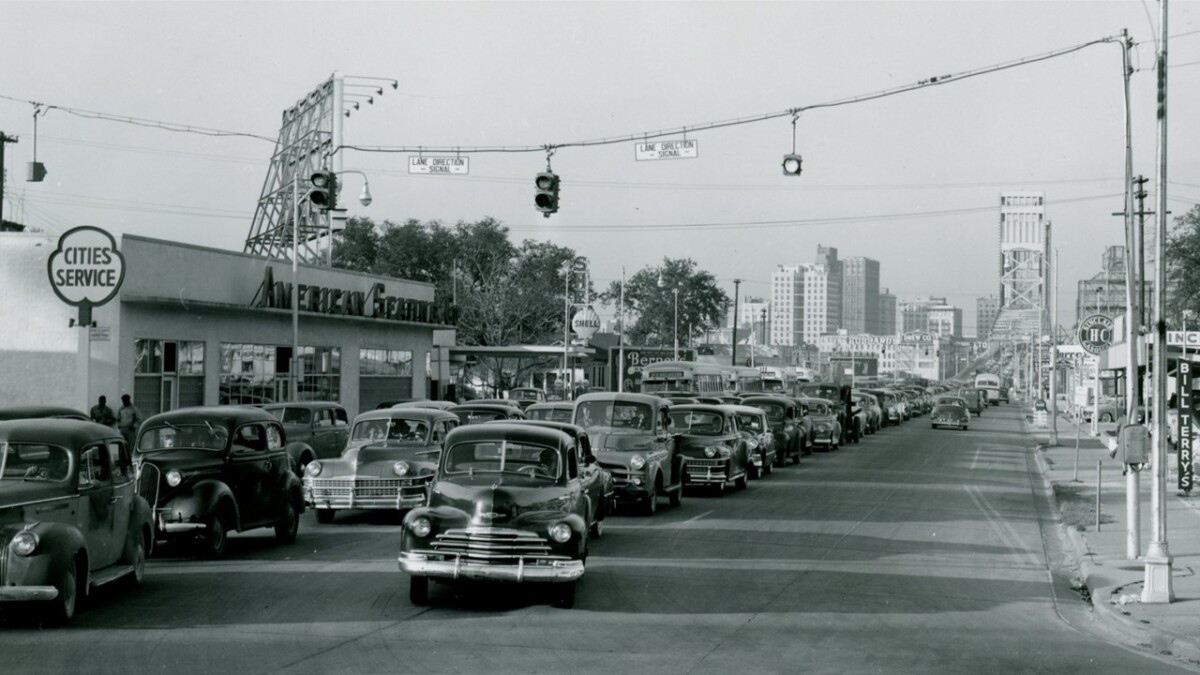
While the Chitlin’ Circuit is generally recognized for its musical contributions to society, in honor of National Barbecue Month, barbecue is a part of the circuit’s legacy of local authentic restaurants, operators and stands that continue to dot the landscape.
Origins of the Chitlin’ Circuit

The Chitlin’ Circuit was the collective name given to a series of Black-owned nightclubs, dance halls, juke joints, theaters and other venues that were safe and acceptable for African American entertainers to perform in during segregation. Notable venues on the Chitlin’ Circuit were the Cotton Club and Apollo Theater in Harlem, the Royal Peacock in Atlanta, the Fox Theatre in Detroit, the Howard Theatre in Washington, D.C., and the Two Spot and the Knights of Pythias in Jacksonville. The name for the circuit is related to African American foodways, specifically chitlins, which were a food staple for enslaved African Americans and continues as a part of Southern Black cuisine today.
Barbecue is another dish closely associated with the Chitlin’ Circuit that continues to be popular amongJacksonville diners.
The Chitlin’ Circuit and barbecue

In the South, the Black community and barbecue have a relationship that has been intertwined since slavery. While regional styles have evolved over time, barbecue is a cooking method and style of food that predates the state of Florida by centuries. The origins of American barbecue can be traced to the Gullah Geechee Cultural Heritage Corridor, which stretches along the Eastern coastline from North Florida to North Carolina.
Its roots are a combination of Native American, Spanish and African culinary heritage. The word “barbecue” comes from “barbakoa,” a term for open fire grilling used by the Taino people of the Caribbean, adopted into Spanish as “barbacoa.” The indigenous peoples of Florida, such as the Timucua, also slow-cooked their meat and fish on grills over open fire. Learning how to barbecue hogs from Caribbean natives, the Spanish are said to have introduced the hog to Florida and the South around 1521.
Prior to their arrival in the Americas, West and Central Africans had already mastered cooking wild game over open pits and serving the smoked meat with sauces made from limes, lemons and hot peppers. According to early 20th century Jacksonville folklorist Zora Neale Hurston, the enslaved then adapted and combined these techniques, leading to the various styles of American barbecue and sauces that we know and love today.
By the 1700s, African Americans were Southern, or pit, barbecue’s “go-to” cooks. This type of barbecue fused African, European, and Indigenous meat cooking and seasoning techniques, and enslaved African Americans perfected it over a couple of centuries. After Emancipation, African Americans were recruited and sent to every part of the country to make authentic Southern barbecue at all kinds of special events. In many cases, they stayed and kick-started a community’s barbecue restaurant scene.

It became customary in Southern sawmill towns and turpentine camps for a juke that sold barbecue to serve as a place of entertainment for men to unwind. Black entrepreneurs owned these jukes (sometimes spelled “jooks”) in the segregated South and provided a place where laborers could eat their daily meals. “The grilled chicken, spare ribs, spicy pork, and whole range of smoky barbecued meat cooked so well in these places…are a continuum of the cooking that males did, beginning with those on plantations,” writes anthropologist Anne Yentsch.
A History of Memphis Barbecue by historian Robert F. Moss also highlights the relationship between the Chitlin Circuit and barbecue:
“Memphis-style barbecue has its roots in the early years of the 20th century, when smoked ribs and pork sandwiches became lunchtime staples as well as filling late-night treats for revelers at the city’s many nightclubs. Memphis in these years was an economic magnet that drew thousands of people from the surrounding countryside to try their fortunes in the city. A large percentage of these migrants were African Americans looking for better economic opportunities than farming, and the city’s black population grew from 3,800 at the time of the Civil War to over 50,000 by the turn of the twentieth century, amounting to more than half of the city’s total population.
Memphis also drew crowds of weekend visitors, for the city was the hub of the world’s largest timber market. Laborers from lumber and turpentine camps in the bottomlands of Mississippi poured into town on their days off with hard-earned wages in their pockets. They were joined by waiters, cooks, porters, and deckhands from docked riverboats along with more than a thousand men who worked in the city’s booming railroad yards.
These visitors were looking for three primary things: food, booze, and entertainment. A vibrant nightlife developed in Memphis, with its center on Beale Street. By day, Beale was the heart of Black commerce in the city, lined with banks, dentist offices, dry goods stores, bakeries, and restaurants. At night it transformed into a bustling nightlife district, with saloons, theaters, and music halls, which were where the Memphis blues was born.”
The Chitlin’ Circuit and barbecue in Jacksonville

Barbecue, booze and entertainment shared a similar relationship in the development of Jacksonville’s early African American neighborhood commercial districts like Florida Avenue on the Eastside, Myrtle Avenue in Durkeeville, Moncrief Road in Moncrief and West Ashley Street in LaVilla, a peer of Memphis’ Beale Street.
Adjacent to railroad yards, naval stores yards, sawmills and riverfront wharves, Jacksonville’s African American neighborhoods were known throughout the Gullah Geechee Cultural Heritage Corridor for their nightlife, entertainment, music and barbecue scene. For example, by 1955, barbecue restaurants on or near West Ashley Street strip, the heart of Black commerce in Jacksonville, included A Brown Bar & Bar-B-Q, Bill’s Bar-B-Que, Duck’s, Ivory’s Barbecue & Chili Parlor, and Singleton’s Superior Bar-B-Q.
In many communities on the Chitlin Circuit, a popular menu item just after World War II was the rib sandwich, which consisted of three or four ribs served between slices of bread with slaw and a little barbecue sauce. Served with the bones in, the sandwich was meant to be pulled apart with the fingers and eaten. Locally, this historic dish continues to be a popular item at two of Jacksonville’s oldest barbecue restaurants, Holley’s Bar B Q and Jenkins Quality Barbecue. Originally located on Downtown’s West Ashley Street during the 1960s, Jenkins was recently crowned the best barbecue restaurant in Florida by the Food Network.
Jenkins Quality Barbecue began with God, a dream and $125 on October 11, 1957. Established by Melton Jenkins Jr. and his wife, Willie Mae, Jenkins didn’t have much to his name. What he did have was a secret family barbecue sauce recipe, which had been handed down from his father. He used this to open up his first restaurant at Kings Road near Spires Avenue with a menu that strictly featured ribs and chicken. Advertising in those days was done by word of mouth and “smoke signals.”
Established by Jack Holley in 1937, Holley’s Bar-B-Q is Jacksonville’s oldest and longest continuously operating barbecue restaurant. It owns the distinction of being the place where curly fries were invented. While the rib plate is a popular historic dish, this writer’s go-to menu item is the rib tip plate along with whatever cakes and pies are still available at ordering time!

This historical narrative is the result of research work focused on the history of the Florida Chitlin’ Circuit for the Florida Division of Historical Resources Small Matching Grant program.







